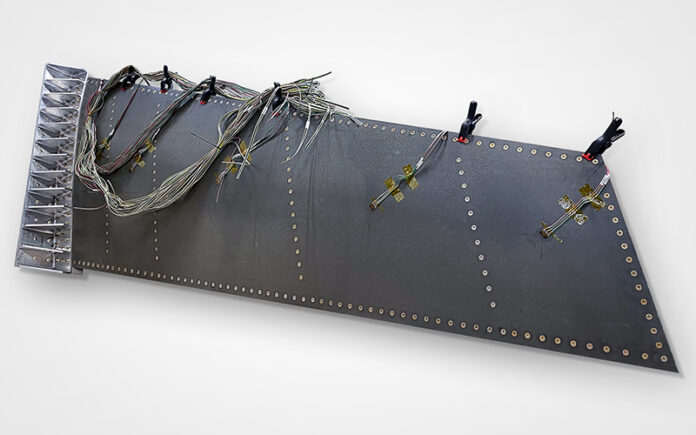Continuous Composites, Coeur d’Alene, Idaho, a maker of hardware, materials, software and motion platforms for composites manufacturing, is a former RadTech Emerging Technologies Award winner. The company successfully completed the Air Force Research Laboratory’s two-year Wing Structure Design for Manufacturing (WiSDM) contract through Lockheed Martin (NYSE: LMT) to manufacture a Low Cost Attritable Aircraft (LCAA) wing. The project focused on a new structural design paradigm, when coupled with commensurate materials and manufacturing, to substantially reduce costs and lead times for attritable airframe structures. Continuous Composites’ patented Continuous Fiber 3D Printing (CF3D®) technology successfully printed the structural carbon fiber spars of the wing assembly. Structural performance was demonstrated when the completed wing box was statically tested and achieved 160% design limit load (DLL) before the compression skin buckled. The spars did not fail.
The program included a range of technologies focusing on innovative materials and manufacturing processes, including CF3D® to print the spars, long fiber injection molding for ribs, additively manufactured tooling, automated fiber placement for skins, autodrill and robotic assembly. More specifically, Continuous Composites printed two 8-foot-long, 4-pound carbon fiber tapered C-channel spars. This novel approach to composites manufacturing features in situ impregnation, consolidation and curing, resulting in significant cost and lead time reduction. The fully automated process features cutting and refeeding, enabling ply drops and variable part thickness within the structure.
The final wing assembly was delivered to the US Air Force to undergo static load testing. The fully assembled wing was loaded to 160% of Design Limit Load. No measured or visual damage to the CF3D® printed spars was detected. The printed carbon fiber spars achieved a 60% fiber volume fraction with approximately 1% to 2% voids.
John Scarcello, senior manager, Lockheed Martin Skunk Works®, stated that the successful work with Continuous Composites and AFRL’s focus on CF3D® for this project not only advances new 3D printing technology but also offers the potential for aerospace-grade composite printing in high-performance industries. Lockheed Martin recognizes this process is paving the way for broader applications within both defense and commercial applications, and Lockheed Martin plans to be part of that future of advanced manufacturing.
Ray Fisher, Air Force Research Laboratory program manager, commented that CF3D® presents an innovative manufacturing technology that shows great promise to be both low cost and agile to the production rate and responsiveness requirements to realize attritable airframe structures. The success of this LCAA project shows great opportunity for additive manufacturing with customized CF3D® material solutions that can orient structural fibers optimally. It is especially attractive to avoid expensive tooling in manufacturing aerospace structural parts. Fisher looks forward to additional opportunities to incorporate CF3D® in increasingly complex structures that are further optimized for attritable enabling production.
Tyler Alvarado, chief executive officer, Continuous Composites, stated that this project is one application where CF3D® showcases the significant cost reduction and design freedom while exceeding the stringent mechanical properties required for aerospace. The company’s team is very appreciative to Lockheed Martin, the US Air Force and other partners for including CF3D® in this LCAA project. Continuous Composites is taking the next steps to select its long-term DoD prime partner while engaging the Air Force as evidenced by the upcoming announcements of its key involvement with AFRL PiCARD program in parallel to a five-year CRADA.
For more information, visit www.continuouscomposites.com.







